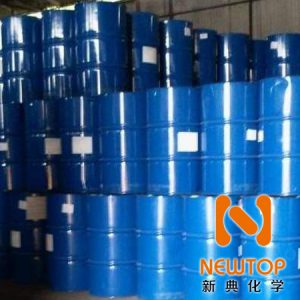Efficient trimerization catalyst
Aliphatic and cycloaliphatic isocyanate high-efficiency trimerization catalyst
Polyurethane has excellent physical and mechanical properties and chemical resistance. It is widely used in foam, coatings, elastomers, adhesives, leather, etc. Defects such as poor thermal properties, low softening temperature and low decomposition temperature limit its application in certain fields. Later, it was discovered that both aromatic and aliphatic isocyanates can self-addition and trimerize to isocyanurate under heating. Because the isocyanurate ring has a strong electron withdrawing effect, the polarity of the C=N bond of the NCO in the molecule increases, thereby increasing its reactivity, reacting with the hydroxyl group to be cross-linked and cured into a film, and the degree of cross-linking of the cured product When increased within a proper range, the hardness increases and the adhesion increases.

Aliphatic and alicyclic isocyanate high-efficiency trimerization catalyst Aliphatic and alicyclic isocyanate high-efficiency trimerization catalyst trimer Catalyst
Polyurethane products containing isocyanurate rings have the following characteristics:
①Because the isocyanurate ring has high radiation resistance, the polymer material prepared has high radiation protection performance.
②It has good corrosion resistance and anti-yellowing performance.
③The isocyanurate ring does not contain active hydrogen atoms, so hydrogen bonds will not be formed, so the isocyanurate containing isocyanurate has low viscosity and high solid content .
④The isocyanurate ring is very stable, so it has a long storage time and has good heat resistance.
⑤Because the isocyanurate ring contains a flame-retardant nitrogen element, the material made of it is flame-retardant.
Therefore, isocyanate trimers are highly concerned by people, and are used in coatings, adhesives, sealants, elastomers, foam plastics and other fields. They are used in textiles, papermaking, etc. There are also reports of applications in fields such as, inks, etc.
Foreign countries began to industrially produce isocyanates containing isocyanate trimers in the 1970s and have formed a series of products, among which the more famous manufacturers include HULS and Bayer , SAPICI company, etc.
However, aliphatic and cycloaliphatic isocyanates are relatively low in activity, so in actual production, the preparation of trimers of aliphatic and cycloaliphatic isocyanates requires Add a suitable catalyst for catalysis. Unlike conventional TDI trimer preparation, conventional tertiary amine catalysts such as DMP-30 have little effect on the trimerization of aliphatic and alicyclic isocyanates. Conventional potassium metal salt catalysts have little effect on aliphatic and alicyclic isocyanates. There is a certain trimer effect, but it still fails to meet the actual production requirements. In this regard, Song Chunmei of East China University of Science and Technology used potassium acetate as a catalyst to synthesize IPDI trimers at a certain temperature, and compared with 2,4,6-tris(dimethylaminomethyl)phenol (DMP-30), The results are as follows:
C1-C4 is potassium acetate, S1-S3 is DMP-30
From the data in the above table, it can be seen that DMP-30 has no obvious effect on IPDI trimerization catalysis, while potassium acetate has an effect on IPDI trimerization catalysis, but its conversion rate not tall.
In response to this situation, Xindian Chemical has developed a new type of trimerization catalyst NT CAT P200 after many years, which can effectively trim aliphatic and alicyclic isocyanates. Gather, take IPDI as an example to do a comparative experiment:
Take 710 g of IPDI monomer in a 1 liter four-neck flask with mechanical stirring. Stir rapidly under the protection of nitrogen gas, and heat the reactor to 85°C. The catalyst NT CAT P200 was added separately, the temperature was maintained, and the stirring was continued for two hours. The sample analyzed by FTIR showed that the conversion rate was 57%. Phosphoric acid was added to deactivate the catalyst, and 700 g of a substantially colorless reaction product was obtained. The obtained product has a viscosity of 2200 mPa.s (25°C) and an NCO% index of 28.6. Add 84.7g IPDI monomer to dilute the product, and the viscosity of the diluted product is 730 mPa·s (25°C). The distribution of oligomers determined by GPC is 78.3% for trimers; 16.4% for pentamers; and 5.3% for heptamers and higher oligomers.
The experimental results show that: NT CAT P200 catalyst not only has higher reactivity, but also has better selectivity, and it can reduce the viscosity, color and odor of the product. There are also great advantages in other aspects.
Technical Support Tel: Manager Wu 18301903156


